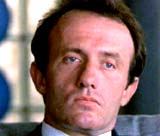
When I was a kid, besides going back to school and the run-up to Halloween, this time of year was a big deal for me because of the new fall TV season.
Yes, I was a TV geek.
I eagerly anticipated the fall season, which usually had at least one or two shows that I wanted to see. Besides, who could guess just how great “The Night Stalker” or “Planet of the Apes” (the TV series) might make the fall of 1974?
There’s less anticipation about the fall TV season nowadays because the TV year is so fractured – worthwhile series debut throughout the calendar year – and, speaking only for myself, I watch less TV.
Because I watch less TV, I try to make every random hour and half-hour count.
So here’s what I’m watching right now as well as what I’m anticipating, what I’ve given up on and what I’m worried about.
“Copper” is a BBC America series – the channel’s first original production – that just debuted last Sunday. It’s about cops in New York City in 1864. The city was a lawless place, full of casual cruelty to children and others who couldn’t defend themselves, and the police department wasn’t much better. Into the mix comes Kevin Corcoran (Tom Weston-Jones), an Irish-American veteran of the Civil War who has come back to the city to find his wife missing and his child dead. The series, which has a nice gritty tone, follows Corcoran as he investigates crimes – the murder of a child prostitute in the first episodes, for example – and patrols the grimy streets and brothels of the city.

“Justified” is returning for a fourth season sometime in early 2013 and it’s likely that our favorite Kentucky-born-and-bred U.S. marshal, Raylan Givens, and his longtime friend and sometimes antagonist, Boyd Crowder, will find themselves up against some new lowlife. Timothy Olyphant and Walton Goggins lead a great cast.
We don’t have to wait until next year to see “The Walking Dead.” The AMC series returns on Oct. 14 for its third season. The series will be split between the prison the survivors were near in the final episode of last season and the town of Woodbury, presided over by the Governor. The first eight episodes air this year, with eight more beginning in February.
I’m not sure when “Mad Men” and “Falling Skies” will be back – hopefully early in 2013 – but I’ll be watching the two very different series. Both came off solid seasons this year.
Few series have been as enjoyable in the past three years as NBC’s “Community,” an odd and offbeat show about a group of misfits who become friends in a study group at a second-rate community college. But I’m worried about “Community” this year after the departure of creator Dan Harmon. By most accounts a genius with people skills issues, Harmon got fired at the end of last season. The cast is great and the stories – complete with blanket forts, paintball apocalypses and genuinely nice character moments – are wonderful. But can the show survive without Harmon? Or will it become another kooky sitcom like “Scrubs?”
I’m not sure I’ll be around for a second season of “Longmire,” the A&E series based on Craig Johnson’s enjoyable series of mystery novels about a Wyoming sheriff. The show looked pretty good and the cast was fine, but the mysteries were mediocre. When the show did take a page from one of Johnson’s stories, as it did in the season finale, it didn’t bring the author’s charms.
I’m not sure I’m looking forward to anything on TV quite as much as a live-action Marvel Comics series set in the “Avengers” movie universe. Luke Cage? Daredevil? S.H.I.E.L.D? Where will creative genius and “Buffy the Vampire Slayer” mastermind Joss Whedon take this series? Wherever it is, I’m following.
The best part about TV is that, in any given season, some really terrific show can suddenly appear and make you glad you gave it a try. I’ve felt that way about every show on this list at one time or another.




































